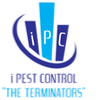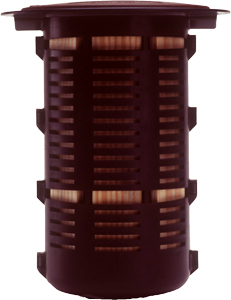Exterra
Exterra is derived from a combination of three words, exterminate, termite and terra (terra is Latin for earth), the meaning of Exterra being literally that which exterminates termites in the earth.
How are termites baited with Exterra?
Termite baiting with Exterra is a straightforward and simple multi-step process. The first step is the installation of stations in the ground at regular intervals around the structure. The stations are inspected at periodic intervals for the presence of termite activity in the station.
If termites are found in a station, the station is baited. Baited stations are inspected on a regular basis and rebaited as needed. When termite feeding in a station ceases for a length of time, any remaining bait is removed at which point the process begins again. This is necessary in case the colony was not completely eliminated or other nearby termite colonies invade the area vacated by the previous colony.
Description
What are the component parts of Exterra and how are they used?
The Quarterra bait station, wooden interceptors and Labyrinth* Termite Bait.
What are interceptors and how are they used?
Interceptors are specially cut pieces of a type of wood that is highly preferred by termites. Before a station is used, six wooden interceptors are placed in the station in such a way that they line the interior of the station while resting against the outer walls of the station. Because the walls of the station have numerous openings in them to the exterior, the interceptors come in direct contact with the earth when the station is installed in the ground. Once the station is installed, randomly foraging termites discover the interceptors and begin feeding on them. This feeding establishes termite activity in the station and is referred to as interception. Once termites are intercepted, Labyrinth Termite Bait is installed in the station.
Can termites be attracted to a station?
After many years of research, the answer is YES! Our non-toxic, easy to use FOCUS granules are scientifically proven to attract termites. FOCUS works by emitting CO2 much like rotting wood or existing termite nests. FOCUS can be added to any bait station to decrease termite discovery time.
How can you be sure that termites will feed in a station?
Termites are scavengers always in search of a new source dead cellulose. Termite baiting systems rely on the nature of termites to randomly and continually forage in the area around their nest in a never ending search for new sources of food. However, interception is not a foolproof process. One reason that termites may not be intercepted in a station is that there are no termite colonies present in the ground in the area close to the station. Also, as randomly as termites feed, they may simply fail to find the station. This is why, if after a period of time termites are not intercepted in a station, it is sometimes advisable that an unvisited station be moved to another nearby spot to see if termites can be intercepted there.
How are station installation locations chosen?
The Labyrinth Termite Bait label directs that in ground stations be installed at a structure based on three criteria – close to areas of the structure known to be infested with termites (if any), in areas of expected termite feeding in the ground (such as areas of moderate moisture and cellulose in contact with the ground) and a catchall requirement of a maximum distance between stations. A maximum distance apart requirement is necessary to make sure that termites never have to forage too far to find a station. Above ground stations are placed in contact with parts of the structure known to be infested with termites.




Reviews
There are no reviews yet.